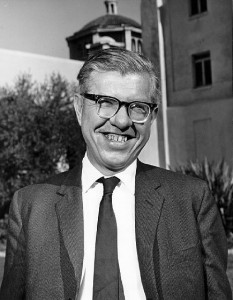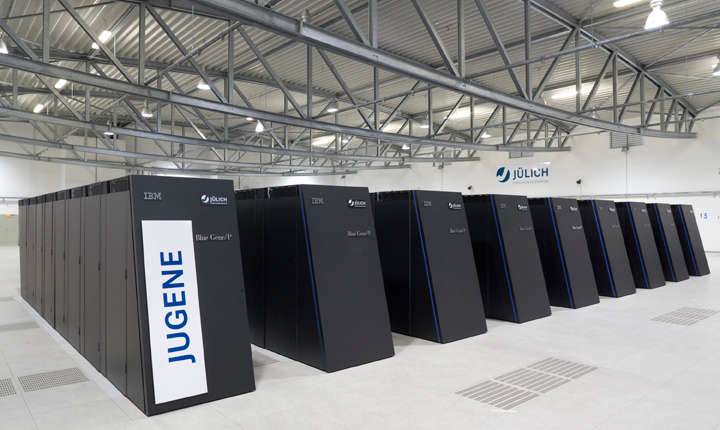Primordial nucleus as a precursor of the elements of life

Billions of years ago, all the carbon that exists on Earth, appeared inside the distant dying stars. First, the nucleus of each atom appeared in a bloated state and in cramped, with a minimum of chances of survival. Of the 2500 who did not survive, only one turned into a stable form capable of supporting life.
Martin Freezer, a nuclear physicist and practitioner from the University of Birmingham, said that understanding the structure of atomic nuclei will help explain the frequency and mechanisms of its transformation into other states, generating many other elements in the Universe. Calculations help explain the existence of Hoyle’s state and discover how accurately the Universe is tuned to the origin of life. “If Hoyle’s condition didn’t exist, there wouldn’t be us, and if his energy were a little different, life would have gone the other way,” says Freer.
This prehistoric, unstable nuclear state, called the Hoyle state, was discovered more than 50 years ago, but it took the emergence of supercomputers and the development of new mathematical techniques to understand how its appearance is consistent with the laws of physics. In a paper first introduced in May 2011 and then improved for publication in 2012 in the journal Physical Review Letters, a group of theoretical physicists from Germany and the United States applied physics to a computer-generated set of subatomic particles to build an atomic structure of Hoyle from scratch.
“It looks like a bent arm,” said Dean Lee, a professor of nuclear physics at North Carolina State University and co-author of the work.
')
Physicists claim that understanding the structure of Hoyle’s state will help discover how it contributes to the appearance of carbon, oxygen, nitrogen and other light elements that make up the complex molecules of living organisms. The synthesis of these elements gives rise to life, and also supports the evolution of stars.
"The carbon-oxygen-nitrogen cycle is simply necessary to form the remaining elements, and to understand how stars live and die," says Morten Hjorth-Jensen, a professor of theoretical nuclear physics at the University of Oslo and the University of Michigan, not participating in the project. “And, of course, without Hoyle’s condition, we wouldn’t have been here.”

Fred Hoyle in 1967 at California Technological
The search for Hoyle’s state of mind began in 1954, with the appearance of what astrophysics writer Markus Chown called the “most blatant prediction” of science. The astrophysicist theorist Fred Hoyle reasoned that his own existence proves that an unknown, exotic state of a carbon atom with 7.65 MeV of additional energy must arise inside the stars, despite the fact that no one ever recorded the spectral radiation of such an atom.
“ Hoyle postulated that for the existence of life, the existence of 7.65 MeV of carbon is necessary,” says Hyort-Jensen. “And then, after 4-5 years, experimenters from Kaltek really found Hoyle's state of radiation.”
As predicted, almost all the key elements of life come from this transient form of carbon. When in stars of average size, such as the Sun, hydrogen begins to end, from which helium is synthesized, their outer layers expand and turn red, and the nuclei shrink. During compression, the helium nucleus (alpha particles), each containing two protons and two neutrons, shrink together so strongly that they turn into an atomic nucleus of four protons and four neutrons, called beryllium-8. One thousandth of a trillionth of a second before beryllium disintegrates back into two alpha particles, the third alpha particle sometimes penetrates into it, and merges to form an excited, enlarged carbon-12 core: Hoyle's condition. In addition to the usual six protons and six neutrons for carbon, this state also contains excess energy.
The core in the state of Hoyle almost always decays into beryllium and alpha particles. But once out of 2500 this bloated carbon goes into a stable state, yielding excess energy in the form of gamma rays. The created carbon-12 nuclei crawl away on the periodic table: some remain in this form, the other merge with another alpha particle and form oxygen. Part of the oxygen nuclei loses the proton and turns into nitrogen. Others merge with another alpha particle and turn into neon, and so on. If a star ends with a supernova explosion, it throws all the newly created elements into space, and they become the building blocks of future solar systems.
Hoyle, who left us in 2001, knew that without Hoyle’s condition at the initial moment, these elements would not appear. Hoyle's condition is the resonance of carbon formed by the beryllium atom and the alpha particle, in the sense that it contains almost as much energy as their total mass. In a stable carbon-12 energy is less, so it does not appear through the synthesis of alpha particles and beryllium, just as two plus two do not give three. “The existence of all these stable states speaks of the need for resonance,” says Hjort-Jensen.
But Hoyle predicted only the energy of the resonant state of carbon; he could not say anything about the forces and interactions leading to his appearance, or about his physical properties. Since carbon contains six protons and six neutrons, each of which has three quarks, Hoyle’s state is a very complex task of 36 bodies. After decades of work by nuclear physicists and even with the help of modern computers, the exact calculation of this state remains inaccessible.
The new approach, the chiral effective theory (CET), developed by the Nobel laureate, Steven Weinberg, allowed Lee and his colleagues to create a good approximation to the structure of Hoyle's state. The trick uses the fact that the protons and neutrons in the nucleus are kept apart from each other at distances, so they "see" each other not as a structure of three quarks, but as whole, though complex, particles.
If we forget about quarks, then the task of 36 bodies turns into a problem of 12 bodies, but with a strong interaction, electromagnetism and chiral forces of a higher order, controlling the interactions of all particles. And even this task has not yet received an exact solution. “It’s terribly difficult to determine exactly where all twelve protons and neutrons are located,” says Lee.
In order for the calculations to take place, KET applies a mathematical trick, sometimes used in high school. Just as the mathematical function represented by a curve on a graph can be roughly calculated by counting the first few members of the Taylor series — an infinite sum of ever-decreasing members — around a point on the curve, the researchers approximate the forces that create Hoyle’s condition, considering only the first few members in the Taylor series for these powers.
“I like to compare this with hitting a par-3 hole in golf [a hole, a hit from which a professional golfer should take no more than three strokes - approx. trans.], ”says Lee. The first blow, as the first members of the Taylor series, "brings the ball as close to the hole as possible." The second blow, as the members, not so strongly influencing the movement of particles, brings the ball even closer. The third blow is a small adjustment. After three hits, you get a very good approximation of the structure and energy of Hoyle’s state.

Physicists calculate the state of Hoyle on the JUGENE supercomputer at the Jülich supercomputer center in Germany. IBM's machine reaches a power of 222.8 teraflops.
When a supercomputer uses such calculations in a simulation for six protons and six neutrons located on a three-dimensional lattice, the particles can be arranged in an infinite number of ways. However, in nature there are only configurations of lower energy. Among them, the state of low-energy carbon was found. And one more of them is Hoyle's condition, with 7.65 MeV of additional energy.
On an average laptop, the calculations performed by the German supercomputer JUGENE would take more than two hundred years.
“Starting from the basic principles, you do not need to adjust your model to fit the complex desired objects; you need to count objects from the starting point of the simplest interactions between particles, ”says Lee, who worked together with Eugene Epelbaum, Hermann Krebs, Ulf J. Meisner and Timo Lede. [Evgeny Epelbaum, Hermann Krebs, Ulf-G. Meissner, Timo Laehde]
Hoyle's condition, like a bent arm, takes the form of an obtuse triangle with an alpha particle at each vertex. The additional energy of the nucleus allows the alpha particles to move farther apart from each other than it does with carbon-12 in the ground state, the triangle of which is equilateral.
Martin Freezer, a nuclear physicist and practitioner from the University of Birmingham, said that understanding the structure of atomic nuclei will help explain the frequency and mechanisms of its transformation into other states, generating many other elements in the Universe. Calculations help explain the existence of Hoyle’s state and discover how accurately the Universe is tuned to the origin of life. “If Hoyle’s condition didn’t exist, there wouldn’t be us, and if his energy were a little different, life would have gone the other way,” says Freer.
By increasing the resolution of the three-dimensional lattice in the simulation, Lee and colleagues hope to clarify their view of Hoyle’s condition and better understand the physics that make life possible. “We always want to solve issues related to ourselves,” says Lee. “When life is at stake, it becomes very interesting.”
Source: https://habr.com/ru/post/397655/
All Articles